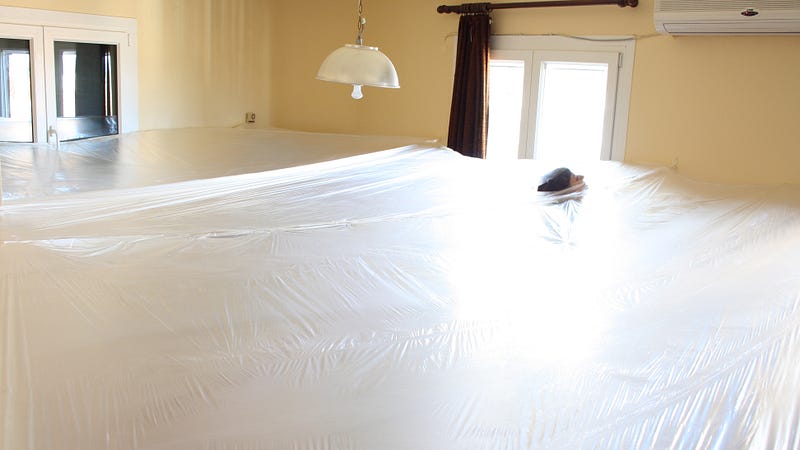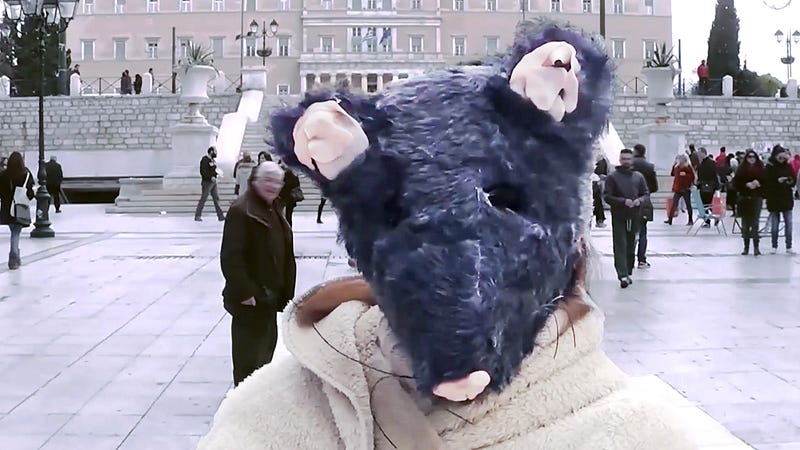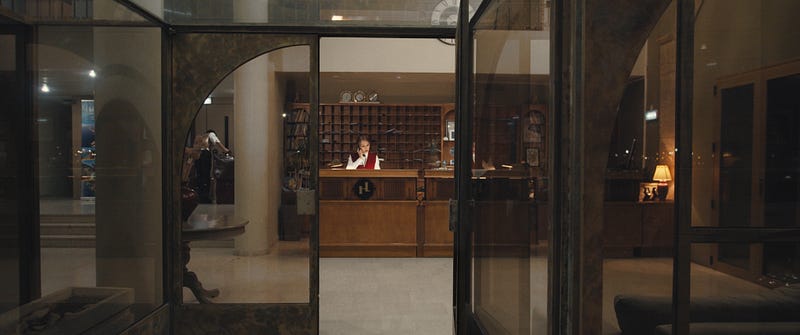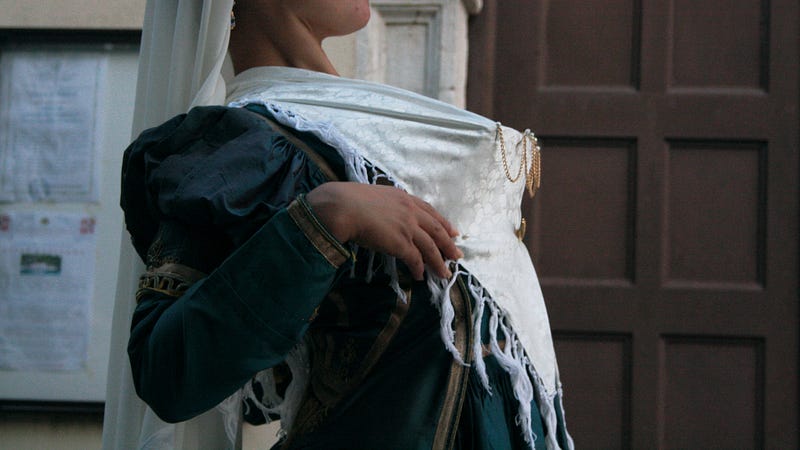11.11.2021
Ways out
Εικαστικες Τεχνες
Γλώσσα πρωτότυπου κειμένου: Αγγλικά
“I spotted the animal as it exited its nest.
From that moment onwards, I started observing it.
I was impressed by the way it emerged,
Quite clumsily and abruptly.
Then it acted naturally, perhaps a bit suspiciously.
Then normally.
Only by the time it re-entered the nest did it behave strangely again,
taking too long.”
Excerpt from Dimitra Kondylatou’s video installation The island — living room.

In 2012 I saw Dimitra Kondylatou’s graduate show at the Athens School of Fine Arts entitled The island — living-room: an installation with eight videos in which a female figure was persistently performing. She herself was this figure, but she was not exactly recognizable, as if she were transformed from a woman to a child, from a human to a savage in a game that seemed serious. Going through various roles, the artist carried out actions in an effort to appropriate both interior as well as public space; she used her teeth to carve a path on a transparent surface like cellophane that covered the entire area of her living room, wrapped herself in a hairy animal-like costume in front of a projection of a map on the wall, or used her body as a surface where her friends wrote places they had visited together.
The island which is also a living room, isolated and connected at the same time. The cellophane which is also the sea. Man, who is also an animal. The city, specific places, spots on a map, body marks. The feeling of claustrophobia in an open space. The mouth as a violent boundary of the body, in which the inside and the outside coexist. Almost a decade later, as I watch this work again with Kondylatou, I feel that she discovers it again with an intermittent sense of shyness as she sees herself performing, going beyond her limits and transforming into something else.

The process of transformation became even more apparent in her video performance works titled Zozefina or a couple of things we know about her, completed for the first time in 2014 but revisited more recently, in 2018 and 2019. As Franz Kafka tells us in the story of Josephine the Songstress or the Mouse Folk (1924), Josephine is a mouse that sings. The people who enjoy her song do not understand exactly why Josephine is so influential; but at the same time Josephine is who she is only because of the people who support her. Josephine is Dimitra, but also many others who decide to do something different as artists, a decision that could often lead them to be in conflict with the rest of the society. “No one sympathises with her. And she believes that no one can understand her,” says Dimitra, transformed into a mouse, addressing the camera in the video. Dimitra becomes Zozefina, just as Gregor Samsa becomes a cockroach, and through her new animalistic identity she revisits her environment experiencing the different reactions of the world towards her, and hers towards the world. Kafka had already been a point of reference in her graduate show, in which she used parts of his novel The Burrow, which relates the story of an animal living in its nest while in the process of coming out. How unfamiliar can we suddenly feel in a seemingly familiar environment?
Kondylatou’s works often contain female figures at a pivotal moment of their existence, whether they manifest themselves as herself in a video performance or the protagonist of the film LUXENIA which she directed more recently in 2021. In the latter, we watch a woman working as a receptionist in a hotel, following the daily routine of her work as she disciplines every necessary move. Suddenly — without any clear reason — she reacts. She takes off her work clothes and starts eating a pineapple in a strange, uncivilised way — and that’s the last scene. What will happen to her after this shift? What keeps us in our place, in our daily life, in what we define as ourselves? What needs to be done to push us beyond all bounds? What is capable of transforming us? If this transformation ever happens, will it last?

The passage from the living room (graduate show) and the public space (Zozefina) to the environment of a hotel is not accidental. Hotels are spaces that are forever trapped in a limbo between warmth and unfamiliarity. For practical reasons, after graduating Kondylatou also “transformed” from an artist to an employee in her family’s guest house in the island of Lefkada, becoming acquainted with these liminal spaces. Her mother and she, as women, were to take care of this space. The irrational profession of the artist / animal is succeeded by a normal full time job. On this island, transformed every summer by tourism, Kondylatou interacted with the local community through research on women working in the tourism industry (which led to video work including interviews with them) and by establishing a self organised residency from 2015 to 2017. Entitled The island — resignified, the residency was a natural extension of Kondylatou’s experience with hospitality, but also an experimental platform for understanding the multifaceted landscape of Lefkada through interaction with local people and structures.

Now the island is no longer a living room. The passage from the nest to the outside world is complete. Or is Lefkada the artist’s nest where instead of leaving, she decided to invite others in? In the same sense, as is inevitable, Kondylatou’s work has also transformed in time, passing from an esoteric artistic practice to something broader. Shifting roles from artist to hostess and caretaker, she constantly redefines her identity, exploring both the inside and the outside — this time collectively.
Dimitra Kondylatou (SNF ARTWORKS Visual Arts Fellow 2019) is an artist based in Athens, Greece. She experiments with various media and forms, including narrative videos, video essays, digital drawings and projects of hospitality.
Eva Vaslamatzi (SNF ARTWORKS Curatorial Fellow 2019) is an independent curator and writer currently based in Athens, Greece.



